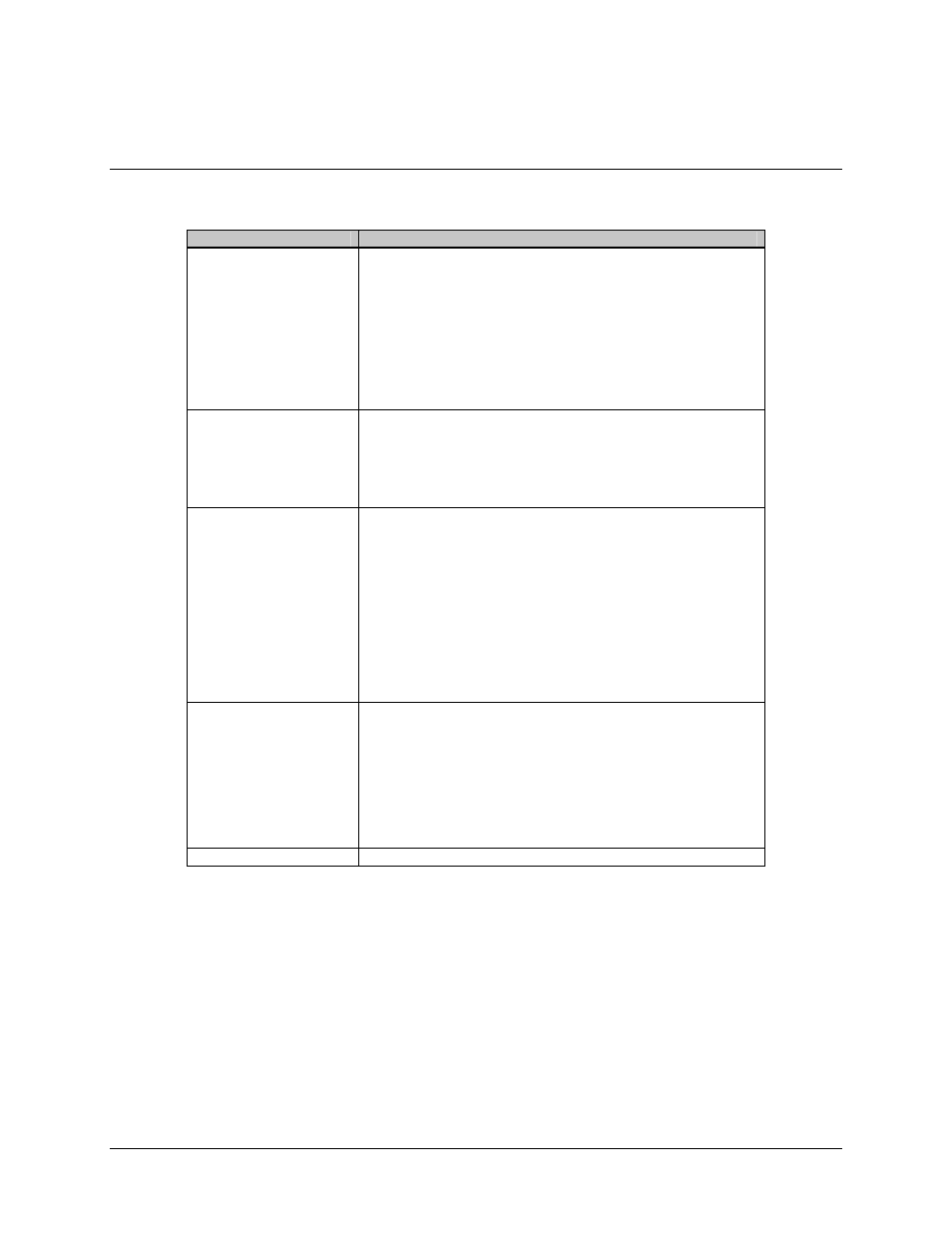4 receive interface faults – Comtech EF Data SNM-1000 User Manual
Page 145

SNM-1000 Node Control Modem
Revision 3
Maintenance
MN/SNM1000.IOM
5–15
5.1.3.4 Receive
Interface
Faults
Fault/Alarm
Possible Problem and Action
BUFFER UNDERFLOW
Buffer underflow alarm.
Indicates the plesiochronous buffer has underflowed. Buffer underflow
is normally a momentary fault (there are clock problems if this alarm is
continuously present). This alarm is included in this section to be
consistent with the fault reporting system and to be correctly registered
in the stored fault memory. The time and date of the first 10 receive
buffer underflow faults are stored in battery-backed memory as an aid
to troubleshooting. The interval between stored overflow/underflow
events can be used to determine relative clock accuracies.
BUFFER OVERFLOW
Buffer overflow alarm.
Indicates the plesiochronous buffer has overflowed.
The problems and actions in the buffer underflow section apply to this
alarm.
RX DATA/AIS
Data or incoming AIS. The data monitored for RX data is coming from
the satellite.
When the AIS is selected for RX data fault in the Interface Utility
menu, the RX data/AIS is monitoring an alarm condition of all 1s from
the satellite. When data is selected for RX data fault in the Interface
Utility menu, the RX data/AIS is monitoring a fault condition of all 1s
or 0s. This is referred to as a data-stable condition (data is not
transitioning). The fault indicates trouble in receiving data from the
satellite. The modem passes this signal transparently, and can close a
FORM C contact. The indication is a monitor function only to help
isolate the source of trouble in a system.
FRAME BER
The receive decoded error rate has exceeded 10
-3
over a 60-second
period measured on the framing bits.
This is defined as a major (prompt) receive alarm by INTELSAT
specifications IESS-308. In a redundant system, a switch-over will be
attempted. Since some data must be correctly received to indicate this
fault, receive AIS will not be substituted. This fault is to be sent as a
backward alarm to the distant end. This must be wired externally, as
faults other than from the modem may need to enter the fault tree.
BACKWARD ALARM
Not Applicable
